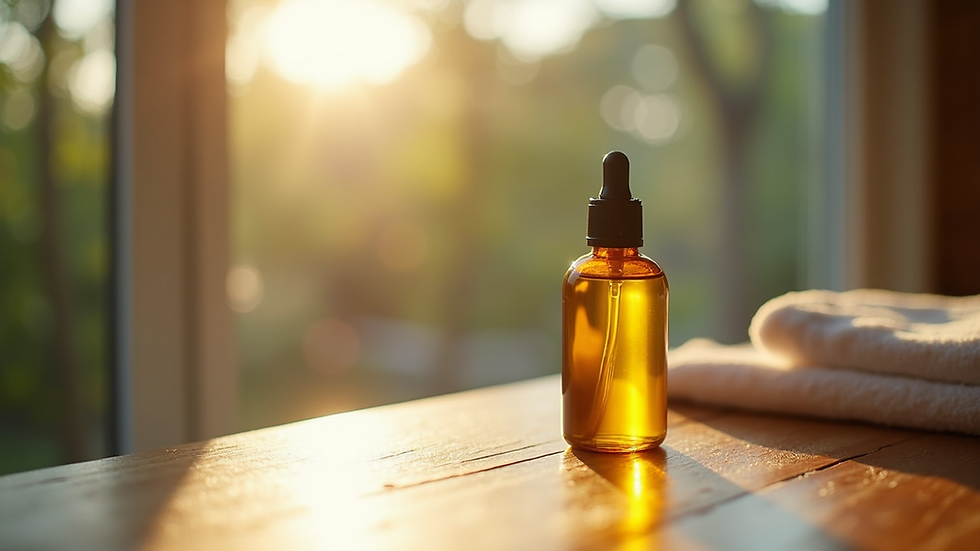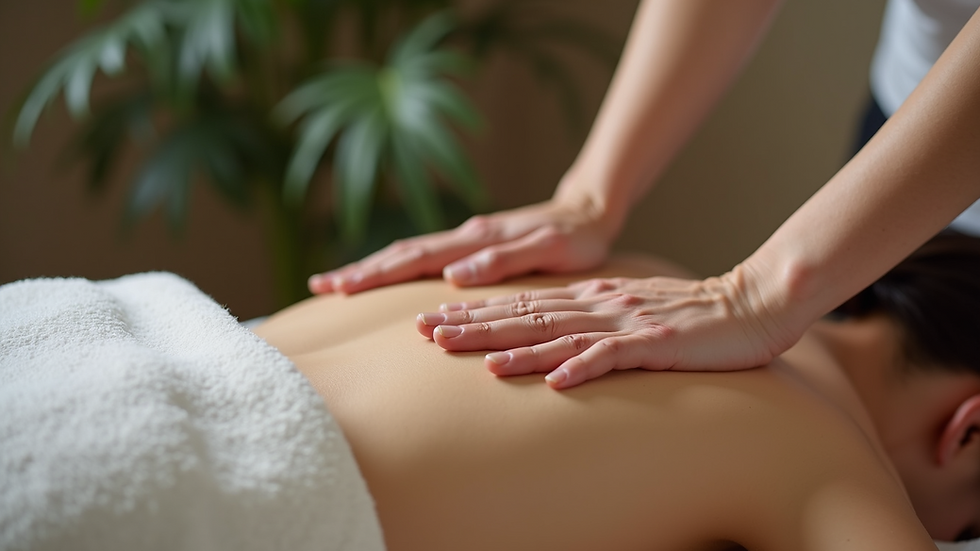Understanding the Basics of Therapeutic Massage
- Katrina Koleto

- Jul 30
- 4 min read
Therapeutic massages have been practiced for centuries as a way to promote relaxation, relieve pain, and improve overall well-being. Today, they are widely recognized for their health benefits and are often recommended by healthcare professionals. This article explores the fundamentals of therapeutic massages, including their benefits, common techniques, and practical tips for choosing the right massage for your needs.
The Benefits of Therapeutic Massage Techniques
Therapeutic massages offer a variety of physical and mental health benefits. They help reduce muscle tension, improve circulation, and enhance flexibility. Many people also find that massages reduce stress and anxiety, contributing to better sleep and mood.
Some specific benefits include:
Pain relief: Massages can alleviate chronic pain conditions such as arthritis, fibromyalgia, and lower back pain.
Improved circulation: The pressure applied during massage helps move blood through congested areas, promoting oxygen and nutrient delivery.
Enhanced immune function: Regular massages may boost the immune system by reducing stress hormones.
Increased range of motion: Massage therapy can loosen tight muscles and joints, improving mobility.
Mental relaxation: The calming effect of massage helps reduce cortisol levels and promotes a sense of well-being.
These benefits make therapeutic massages a valuable addition to a healthy lifestyle.

Exploring Different Massage Techniques
There are many types of massage techniques, each designed to target specific issues or preferences. Understanding these can help you select the best option for your needs.
Swedish Massage
This is one of the most common types of massage. It uses long, gliding strokes, kneading, and circular movements on the topmost layers of muscles. Swedish massage is ideal for relaxation and improving circulation.
Deep Tissue Massage
This technique focuses on the deeper layers of muscle and connective tissue. It uses slower strokes and more intense pressure to target chronic muscle tension and injuries.
Sports Massage
Designed for athletes, sports massage helps prevent and treat injuries, improve flexibility, and enhance performance. It often combines techniques from Swedish and deep tissue massages.
Trigger Point Therapy
This method targets specific tight areas within muscles, known as trigger points, which can cause pain in other parts of the body. Applying pressure to these points helps release tension.
Hot Stone Massage
Smooth, heated stones are placed on key points of the body to warm muscles and improve blood flow. This technique is deeply relaxing and can relieve muscle stiffness.
Each technique has unique benefits, so it’s important to communicate your goals with your massage therapist.

What are the techniques of therapeutic massage?
Therapeutic massage techniques vary widely depending on the goal of the session and the therapist’s training. Some of the most effective techniques include:
Effleurage: Light, gliding strokes used to warm up the muscles and prepare them for deeper work.
Petrissage: Kneading and squeezing motions that help release muscle knots and improve circulation.
Friction: Deep, circular movements applied to specific areas to break down adhesions and scar tissue.
Tapotement: Rhythmic tapping or pounding to stimulate muscles and nerves.
Vibration: Rapid shaking or trembling movements to relax muscles and increase blood flow.
These techniques are often combined during a session to maximize therapeutic effects. For those interested in learning more about therapeutic massage techniques, professional resources and training programs are available.

How to Choose the Right Therapeutic Massage
Selecting the right massage depends on your personal needs, health conditions, and preferences. Here are some tips to help you decide:
Identify your goals: Are you seeking relaxation, pain relief, or injury recovery? Different massages serve different purposes.
Consider your health: If you have medical conditions like blood clots, skin infections, or osteoporosis, consult a healthcare provider before booking a massage.
Communicate with your therapist: Share your concerns, pain points, and preferences to tailor the session.
Start with a shorter session: If you’re new to massage, begin with a 30-minute session to see how your body responds.
Check credentials: Choose a licensed and experienced massage therapist for safety and effectiveness.
By following these guidelines, you can ensure a positive and beneficial massage experience.
Incorporating Therapeutic Massage into Your Wellness Routine
Regular therapeutic massages can be a powerful tool for maintaining health and managing stress. Here are some practical ways to include massage therapy in your routine:
Schedule monthly sessions: Consistency helps maintain muscle health and reduce chronic tension.
Combine with other therapies: Massage works well alongside physical therapy, chiropractic care, and exercise.
Practice self-care: Use techniques like foam rolling or gentle stretching between sessions.
Create a relaxing environment: Use calming music, aromatherapy, and comfortable settings to enhance the experience.
Stay hydrated: Drinking water before a massage helps make your tissues more supple and easier to release.
Integrating massage therapy into your lifestyle can improve both physical and mental well-being over time.
Therapeutic massages offer a holistic approach to health that addresses both body and mind. Whether you seek relief from pain, stress reduction, or improved mobility, understanding the basics of massage techniques empowers you to make informed choices. Explore different methods, communicate openly with your therapist, and enjoy the many benefits that therapeutic massage can bring to your life.







Comments